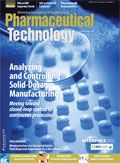Viral Vaccine Manufacturing
A Q&A with Tony Hitchcock, head of manufacturing at Cobra Biologics.
Production of viral vectors for vaccines poses a distinct set of challenges. Tony Hitchcock, head of manufacturing at Cobra Biologics, spoke with Pharmaceutical Technology about trends and challenges of manufacturing viral products in cell culture.
PharmTech: With the approval of Novartis’ mammalian cell-produced influenza vaccine in 2012, production methods for viral vaccines seem to be undergoing a shift from egg-based manufacturing to cell-based. What advances in recent years have enabled this transition and what challenges still remain?
Hitchcock: The production of viral vaccines has been performed in egg-based systems for many years, and it is clear that while significant developments in the production of viral vectors from cell culture-based systems have advanced, many existing vaccine products will continue to be produced in this manner. For example, GlaxoSmithKline has just introduced a quadravalent flu vaccine from eggs, and Medimmune has invested significantly in the automation of eggbased processes at their UK facilities. These developments would indicate that for products, such as seasonal flu vaccine, existing production routes will be retained for the foreseeable future.
For manufacturers of products such as flu vaccines, while significant investment from national governments among others has been put in place to develop a cell-based production process to enable a response to pandemic flu, it is clear that egg-based processes are still sufficiently productive and cost effective to meet needs for seasonal demand. Combined with long-term safety profiles and in-place manufacturing capabilities, the drivers for adopting cell-based processes are not sufficient to justify their adoption. It is also clear that becasuse of the specialist nature of egg-based production facilities, the majority of manufacturing will remain as an inhouse activity with limited opportunities for contract manufacturers in this field.
In January 2013, however, FDA approved Protein Science Corporation’s Flublok vaccine, another non-egg-based influenza vaccine, which is potentially the sign of things to come. It will be interesting to see what the up the uptake of this product will be compared with the existing egg-based products, and how the large pharma companies respond to this.
The real opportunities for the production of viral vectors from cell culture-based processes arguably lie with novel vaccine products, where there are no historical safety profiles in place. Other opportunities lie with products where egg-based systems are unsuitable, or where technical or product safety issues mean alternative approaches need to be sought to meet demands in terms of quantities of material or to achieve required levels of process robustness.
PharmTech: What are the risks associated with using cell-based manufacturing for vaccines, and how are these risks typically addressed?
Hitchcock: The potential risks with cell-based processes can be split into intrinsic and process-related. In terms of intrinsic risks, these will lie with the origin, purity, and design of the viral vector and producer cell line. Process-related risks will lie with the potential to introduce adventious agents/viruses into the process stream. Unlike the production of protein products from mammalian sources, it is clearly not possible to introduce validated viral inactivation or removal steps to mitigate these risks. Addressing these requires application of GMP principles and approaches to development programs at a very early stage, focusing on the history, purity, and stability of the viral vector. It is now commonplace for viral vectors to be rescued from synthesized plasmids, allowing for absolute traceability of the viral vector and full sequencing to be performed of the plasmids and resulting viral product. Stability studies can also be performed to demonstrate genetic stability of vectors at an early stage of development.
With regards to producer cell lines, it is essential that the origins are known and that they are free from adventitious agents and that generation of cell banks for both process development as well as GMP production works. Additionally, there is clearly a need for maintenance of segregation throughout development programs to prevent contamination of viral stocks and cell banks.

Pharmaceutical Tariffs Are Imminent: How Industry is Bracing for Impact
April 16th 2025On April 14, 2025, the Trump Administration launched a national security-driven investigation into pharmaceuticals, a move that will likely result in tariffs being placed on pharmaceutical drugs, ingredients, and other components that are imported from outside of the United States.
Drug Solutions Podcast: A Closer Look at mRNA in Oncology and Vaccines
April 30th 2024In this episode fo the Drug Solutions Podcast, etherna’s vice-president of Technology and Innovation, Stefaan De Koker, discusses the merits and challenges of using mRNA as the foundation for therapeutics in oncology as well as for vaccines.
Pharmaceutical Tariffs Are Imminent: How Industry is Bracing for Impact
April 16th 2025On April 14, 2025, the Trump Administration launched a national security-driven investigation into pharmaceuticals, a move that will likely result in tariffs being placed on pharmaceutical drugs, ingredients, and other components that are imported from outside of the United States.
Drug Solutions Podcast: A Closer Look at mRNA in Oncology and Vaccines
April 30th 2024In this episode fo the Drug Solutions Podcast, etherna’s vice-president of Technology and Innovation, Stefaan De Koker, discusses the merits and challenges of using mRNA as the foundation for therapeutics in oncology as well as for vaccines.
2 Commerce Drive
Cranbury, NJ 08512
All rights reserved.